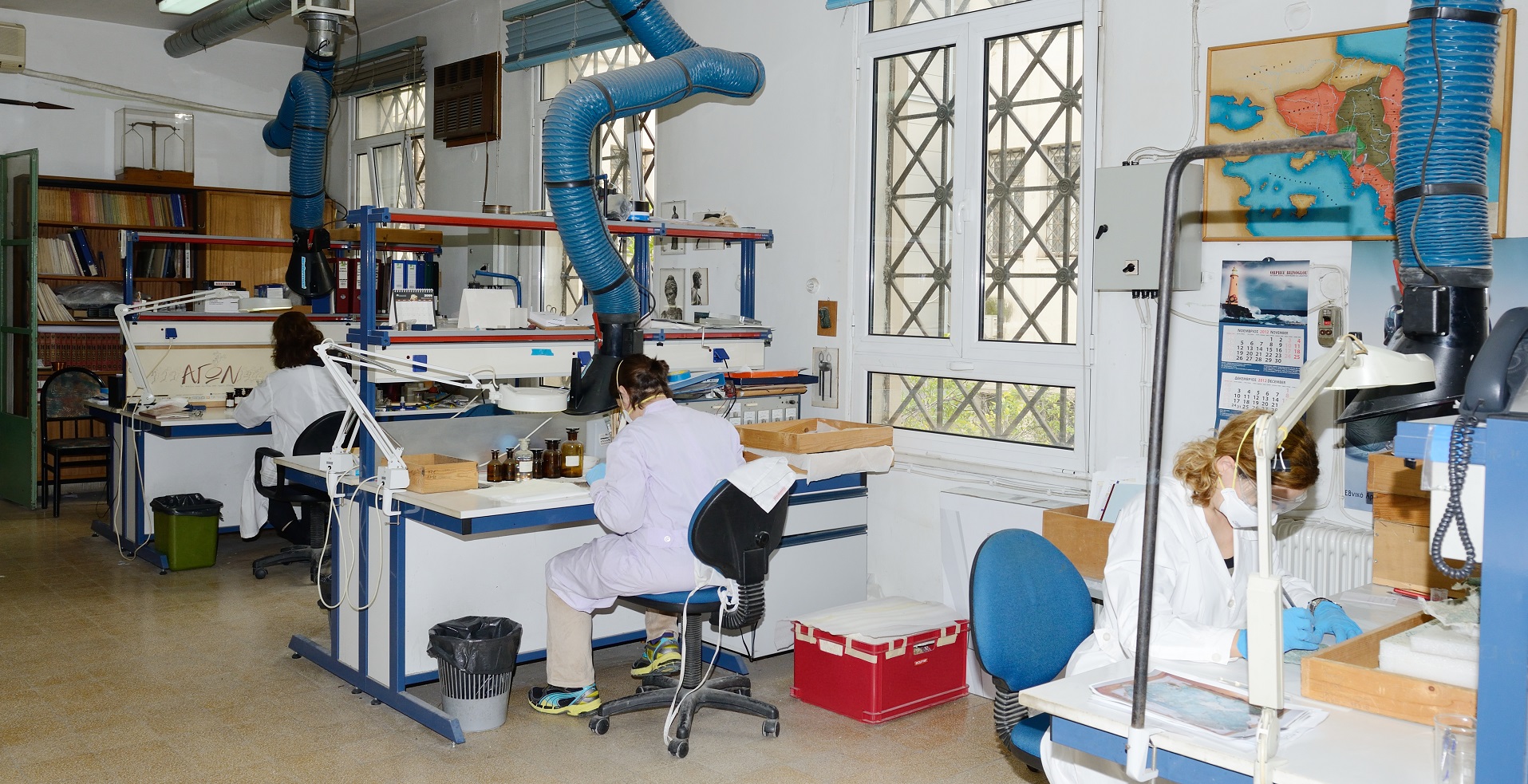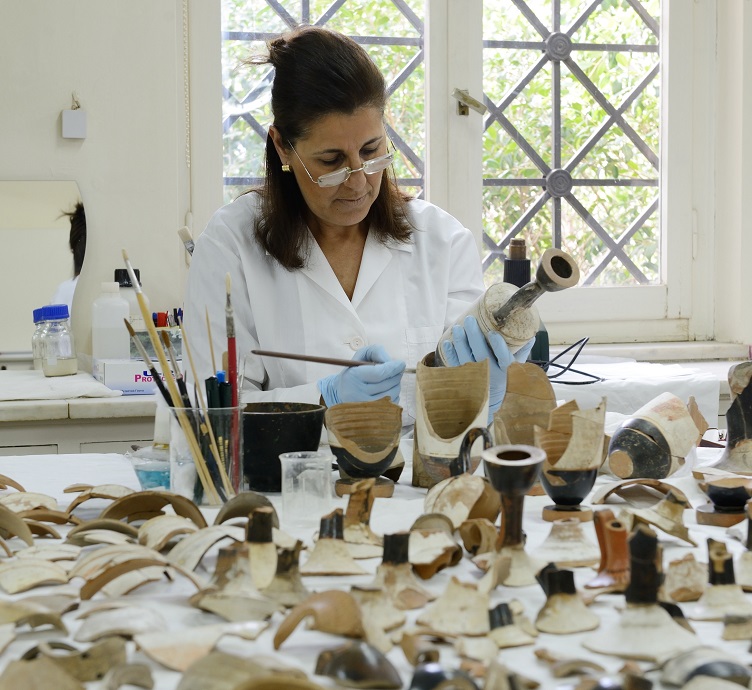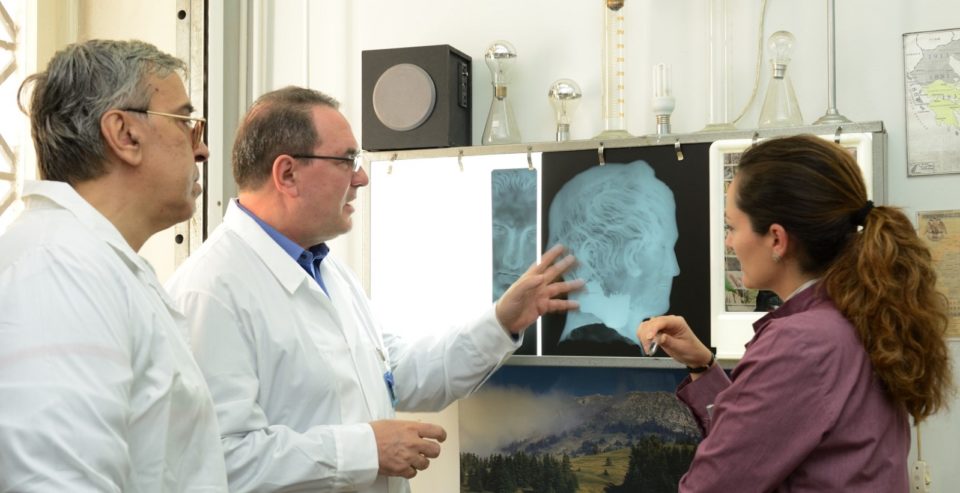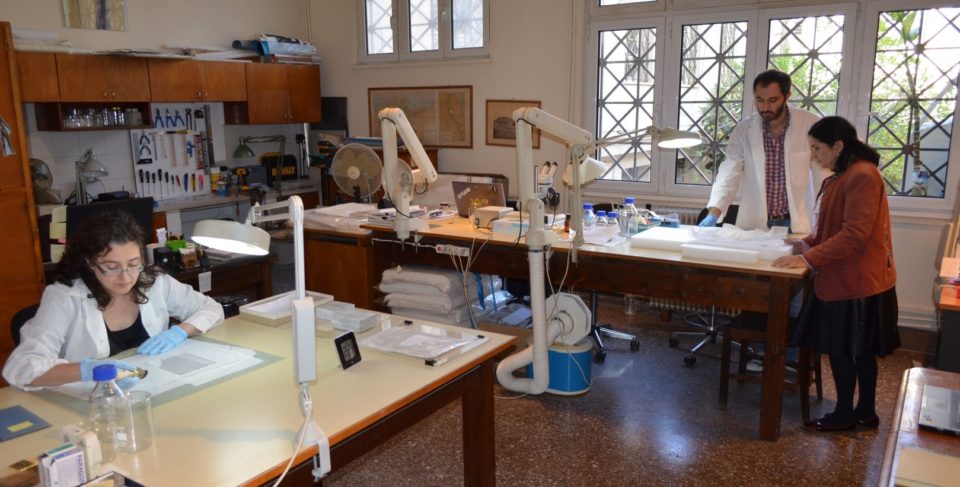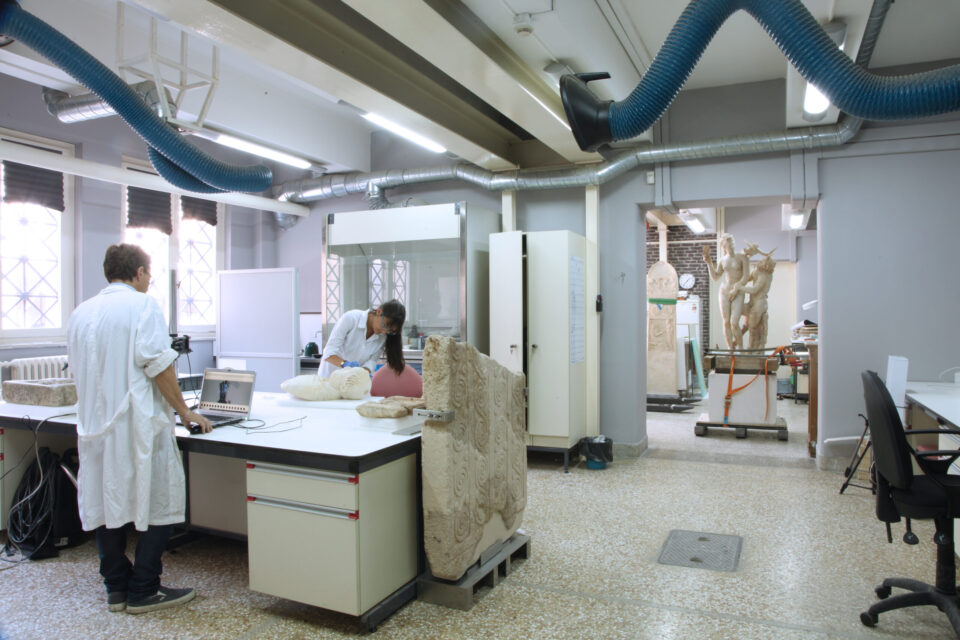Metals Conservation Laboratory
The Metals Conservation Laboratory of the National Archaeological Museum is an elongated space of 150 sq. m., housed on the ground floor of the building at 1, Tositsa street. This is a newer extension, which was done in 1960s, of the main building.
The laboratory has four rooms, one after the other, where in the 1st and partly in the 4th there is a workshop for the construction of bases and mounting systems for the antiquities. In the 2nd (which is the largest room) and the 3rd, there are 6-8 properly equipped, permanent conservation working places. The 4th room is shared between a workshop and a conservation laboratory with equipment for occasional short use.
The laboratory employs four (4) conservators of antiquities: Gerasimos Makris, Georgia Karamargiou, Maria Kontaki and Pantelis Feleris. Their main duty is the conservation of metal antiquities made of copper, iron, lead, silver and gold. The conservation of the antiquities can be original (first conservation) as it is done for excavated objects, or repetitive (partial or complete) as it is done for all conserved objects over the years.
The type of objects is varied, such as pottery, agricultural and medical tools, weapons, helmets, shields, jewelry, mirrors, small embellishment objects, small (figurines) and large statues, various votive objects from everyday life.
The objects come from various excavations in Greece, donations of private collections, deliveries from individuals and seizures. Also, the laboratory can temporarily accept objects from other Ephorates of Antiquities, in order to be conserved or supported, i.e. difficult cases that cannot be addressed at their premises.
The majority of metal objects that enter the laboratory come from the collections of the Museum. The objects are moved to and from the permanent and temporary exhibitions or the storerooms of the Museum for various reasons, such as: conservation, photography, study, examination, conservation report, packing and/or unpacking for transport, etc.
The conservators of the laboratory support researchers in collaboration with archaeologists. Sometimes this means expedited conservation, or sampling for analysis after approval. They collaborate with various research or educational institutions and train conservation students in their internship. They also cooperate with the Archaeological Resources Fund in order to make casts with the traditional method or with 3D scanning for the most delicate objects. They also carry out expert reports on the authenticity of antiquities that are seized from the Hellenic Police or delivered to the Museum from individuals.
The problems that ancient objects present are related to the material of their construction and can be simple or even complex. The treatment of corrosion of metals is special and unique in each case and object. In addition to the active conservation of objects, special emphasis is given to preventive conservation ensuring sustainability for the future.


